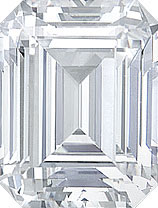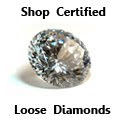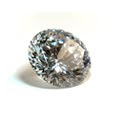Very Good Cut Diamonds are almost as brilliant as Premium or Ideal Cut stones and they do refract almost all of the light that enters them, meaning that Very Good Cut stones do still appear brilliant and sparkling.
Typically with a Very Good Cut Diamond, the cutter has deliberately chosen to move away slightly from the Ideal Cut criteria so as to create a larger Diamond. As a result of this certain variables such as table size or girdle width may fall outside of customers preferences.
The fact that certain variables may be outside of what is termed "Ideal" should most definitely not deter you from considering Very Good Cut Diamonds as your average Joe would most certainly not be able to tell the difference between an Ideal Cut stone and one with a Very Good Cut, even if given the opportunity to compare an example of each side by side. What this does mean to a certain extent is that you are at the mercy of your Jeweler when it comes to identifying the Diamond Cut criteria, one of the reasons it is very important that you only ever consider purchasing Independently Certified Diamonds, a topic we will cover in the future.
However, and in short, do consider Diamonds that are classed as having a Very Good Cut as they often do offer excellent value for money.
 And so we reach Trilliant (or Triangular Brilliant) Cut Diamonds. Providing that Trillian Cut stones are Cut correctly (particularly in relation to their depth), they exhibit fantastically sharp fire and brilliance - truly stunning.
And so we reach Trilliant (or Triangular Brilliant) Cut Diamonds. Providing that Trillian Cut stones are Cut correctly (particularly in relation to their depth), they exhibit fantastically sharp fire and brilliance - truly stunning.
















